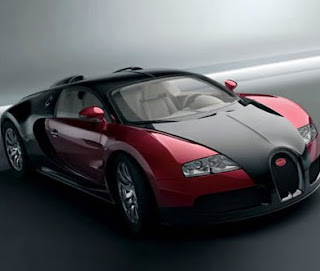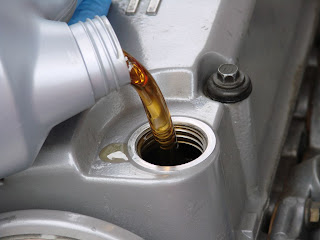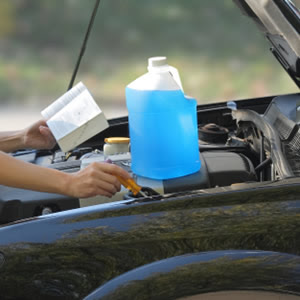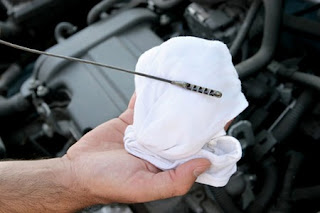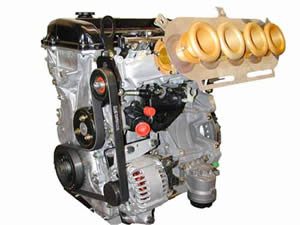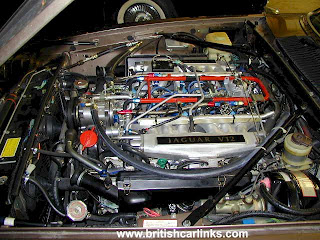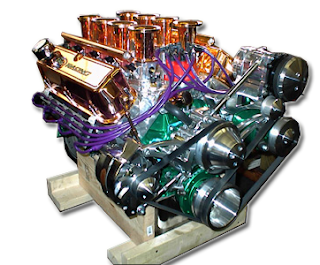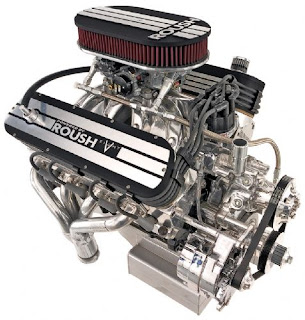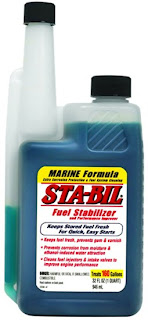
Are you tired of the way your car performs, but don't have the money to replace it with something faster? Well you're in luck! You don't need to spend a fortune on a different car; instead you can invest some money into your current car to make it more of what you want. There are numerous aftermarket upgrades that can dramatically change the driving experience of your vehicle. In this series I will show you 5 performance modifications that will change your average, boring vehicle, into something a bit more sporty!
The first part of this series covers aftermarket air intakes. The purpose of an air intake system is to allow the motor to bring in oxygen, so that it can mix with fuel and spark, to create combustion. The air intake “path” on most factory vehicles, especially cars with fuel efficient motors, is fairly restrictive. What does this mean to the average person? Well, the more restrictive the airway, the less are that can get in. Take a straw for instance; if you suck through it normally, it allows you to take in a certain amount of air with a certain amount of effort. However, if you slightly pinch the same straw, it restricts the intake path and requires more effort to take in the same amount of air. This same concept is applied to an engine’s air induction path.
Air Filters
Usually the most restrictive part of many factory induction systems starts with the air filter. The original purpose of the air filter is to keep contaminants from entering the combustion chambers. Whether it is a microscopic particle of dust, or a pebble the size of marble, you don’t want anything other than air being sucked into your engine. Higher performing engines have less restrictive air filters, and benefit less from replacing them with aftermarket units. However, most factory style “paper” filters do not flow quite as well as the variants offered by aftermarket companies.

There are 3 common aftermarket air filter types: foam, cotton, and paper. It’s debatable as to which truly performs the best, but most aftermarket choices flow much better than stock. The common misconception is that the factory induction design itself is restrictive. For some cars it is, but most have a very well designed intake path. Automakers spend millions of dollars in research and development to design an engine and all of it's components. Therefore, the design was engineered to work well with the motor they came on. The greatest improvement that is felt in an aftermarket intake system is the higher flowing capacity of the performance air filter.
air filter.

Take a look at the difference between the highly regarded AEM filter vs. factory spec filter requirements. The aftermarket air filter can be up to twice as efficient as the factory units. That means more power and better gas mileage! Most people don’t realize how big of a difference an air filter can make in gas mileage. If you don’t change your air filter every 10-15,000 miles, you are robbing your engine of performance, and spending more in gas due to a clogged filter. The same idea can be said about going from a factory paper filter, to an aftermarket replacement, or an aftermarket intake kit. Since the stock filter restricts air going into the engine, the motor has to work harder than it would with a higher flowing filter, to take in the same amount of air.
So how big of a difference can a drop in replacement air filter make when it comes to performance? To be honest, it’s hard to say. The dyno numbers provided by most companies, are usually inaccurate, and lead to overoptimistic expectations. In all reality, an aftermarket air filter may be good for up to 5hp at best. The problem is that the factory “air-box” is not made to flow a greater volume of air then it already does. The “air-box” is the enclosure that contains the factory air filter, and protects it from the heat of the engine. Automakers purposely muffle the factory intake system to keep the engine’s decibel levels as low down. As a result, it is usually a better option to buy an aftermarket cold-air or RAM air intake system, to get the full effect of the higher performing air filter.
Cold-Air Intake Systems
What exactly is a cold-air intake? A cold-air intake is a free-flowing performance induction system that draws colder air from the front, side, or outside of the engine bay. Colder air has a higher density, which increases the actual volume of air entering the combustion chamber versus warmer air. The best engineered cold-air intakes employ an air-box, which encloses a high-flowing conical filter and keeps hot air from entering the intake tract. Very few companies offer intake systems with a new air-box, instead a heat-shield is included to help solve the hot-air issue. A proper heat-shield utilizes the hood to create the same effect as a sealed off air-box. In reality, most aftermarket cold-air setups are hybrids between a true “cold-air” intake, and what’s called a “RAM-air” intake.

RAM-Air Intake Systems
A RAM-air intake set-up is a bit different from a cold-air, most people confuse the two. RAM-air intakes rely on changes in air pressure and air velocity to improve performance. RAM-air systems increase the size of the intake ducting and shorten the path between the filter and the throttle; this in turn decreases velocity of air entering the intake plenum. The decreased air velocity increases static pressure in the combustion chamber; more pressure equals more power. The pressure increase changes the density of the air, which also improves engine performance. The intake pictured below is referred to as a "short-RAM" intake. Due to the limited space in the engine bay, the intake manufacturer designed a system with larger intake ducting and a larger filter, to increase the airflow into the engine. This is more of a hybrid intake set-up due to the added heatshield, which isolates the filter from the hot air in the engine compartment.

Dyno Results
Unfortunately it is hard to gauge the performance gains of aftermarket power modifications strictly on the information provided by the manufacturer. As with any other type of product for sale, many companies will skew the results of their products performance to appear better then they really are. This is usually the case when it comes to most air intake set-ups.
The question then becomes which type is best – cold-air or RAM-air. This is too broad of a question to answer, because different motors respond in different ways to the same modification. Some cars have small engine bays that limit the space available for the most beneficial induction set-up, while others have a plethora of options. For cars with large displacement engines, or forced induction motors, then intake design becomes more important. Some engines respond better to RAM-air systems, while most do best with a cold-air set-up. Usually the colder, denser air provided by a cold-air induction system will yield higher gains throughout the engine’s power-band versus RAM-air, which can show higher peak gains. Here is a dyno graph, showing gains on a 2002 Corvette equipped with a cold-air set-up. This dyno graph is from anonymous owner, not affiliated with the maker of the product.

As you can see, the Corvette greatly benefited from the aftermarket intake setup. The Corvette shows gains of up to 30 hp and 25 ft/lbs of torque at the rear wheels! These gains are very noticeable, and would really improve the driving experience of the car. The dyno graph shows the improvement on both vehicles throughout the entire power-band. Both of these products proved to be worthwhile upgrades, with unbiased results.
Despite the example I’ve provided, most cars see an average increase of 5whp/5wtq with aftermarket intakes. Sometimes poorly engineered, low budget, intake systems can actually rob the car of power, compared to the factory set-up. Real life driving situations skew the results even further, due to changes in air temperature. Improvements vary depending on how warm or cold the air outside the car is; the colder the air temperature, the better the results.
A properly designed air intake is definitely a worthwhile engine modification. Not only will the car see gains in peak power, but it will also change the driving experience overall. Most aftermarket intakes improve throttle response, as well as midrange and top-end power. Another quality that I love about free flowing air intakes, is the intoxicating sound that they add to the engine! I love to hear the intake roaring as I’m rowing through the gears at wide-open-throttle! There truly is no sound that can compare. If you’re looking to improve the overall performance of your car, without putting a big whole in your wallet, then an aftermarket air intake could be the answer for you.
